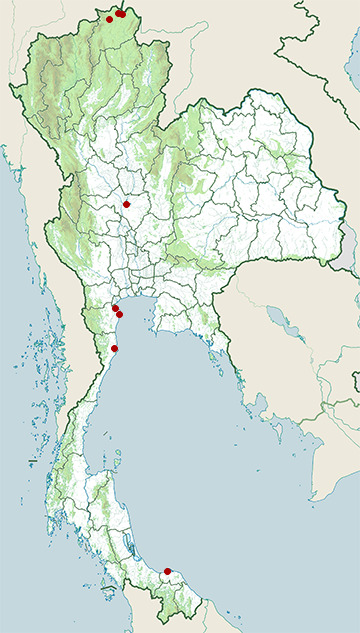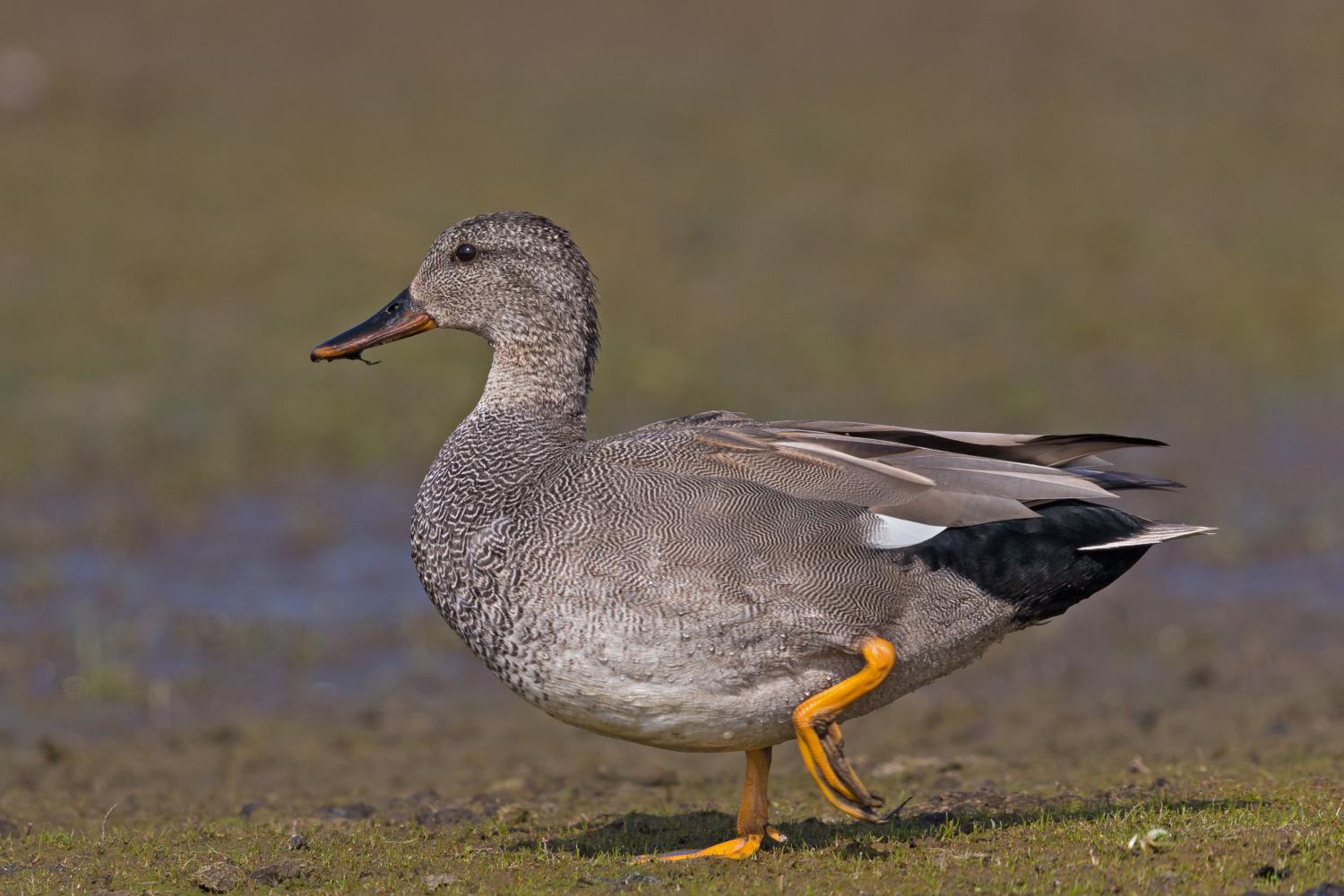Species of Thailand
Gadwall
Mareca strepera
Carolus Linnaeus, 1758
In Thai: เป็ดเทาก้นดำ
The gadwall (Mareca strepera) is a common and widespread dabbling duck in the family Anatidae.
Taxonomy
The gadwall was first described by Carl Linnaeus in his landmark 1758 10th edition of Systema Naturae. DNA studies have shown that it is a sister species with the falcated duck; the two are closely related to the three species of wigeons, and all of them have been assigned to the genus Mareca. There are two subspecies:
- M. s. strepera, the common gadwall, described by Linnaeus, is the nominate subspecies.
- M. s. couesi, Coues's gadwall, extinct 1874, was formerly found on Teraina, a coral atoll in the Pacific Ocean.
The specific name strepera is Late Latin for "noisy". The etymology of the word gadwall is not known, but the name has been in use since 1666.
Description
The gadwall is 46 – 56 cm in abbr=on long with a 78 – 90 cm in abbr=on wingspan. The male is slightly larger than the female, weighing on average 990 g oz abbr=on against her 850 g oz abbr=on. The breeding male is patterned grey, with a black rear end, light chestnut wings, and a brilliant white speculum, obvious in flight or at rest. In non-breeding (eclipse) plumage, the drake looks more like the female, but retains the male wing pattern, and is usually greyer above and has less orange on the bill.
The female is light brown, with plumage much like a female mallard. It can be distinguished from that species by the dark orange-edged bill, smaller size, the white speculum, and white belly. Both sexes go through two moults annually, following a juvenile moult.
The gadwall is a quieter duck, except during its courtship display. Females give a call similar to the quack of a female mallard but higher-pitched, transcribed as gag-ag-ag-ag. Males give a grunt, transcribed as nheck, and a whistle.
Distribution
The gadwall breeds in the northern areas of Europe and across the Palearctic, and central North America. In North America, its breeding range lies along the Saint Lawrence River, through the Great Lakes, Alberta, Saskatchewan, the Dakotas, south to Kansas, west to California, and along coastal Pacific Canada and southern coastal Alaska. The range of this bird appears to be expanding into eastern North America. This dabbling duck is strongly migratory, and winters farther south than its breeding range, from coastal Alaska, south into Central America, and east into Idaho, Kansas, Ohio, Virginia, and then south all the way into Central America.
In Great Britain, the gadwall is a scarce-breeding bird and winter visitor, though its population has increased in recent years. It is likely that its expansion was partly through introduction, mainly to England, and partly through colonization to Great Britain, with continental birds staying to breed in Scotland. It has been reported in the River Avon in Hampshire and Wiltshire. In Ireland a small breeding population has recently become established, centred on Wexford in the south and Lough Neagh in the north.
Behaviour
The gadwall is a bird of open wetlands, such as prairie or steppe lakes, wet grassland or marshes with dense fringing vegetation, and usually feeds by dabbling for plant food with head submerged. It nests on the ground, often some distance from water. It is not as gregarious as some dabbling ducks outside the breeding season and tends to form only small flocks. This is a fairly quiet species; the male has a hoarse whistling call, and the female has a mallard-like quack. The young birds are fed insects at first; adults also eat some molluscs and insects during the nesting season. The gadwall is one of the species to which the Agreement on the Conservation of African-Eurasian Migratory Waterbirds (AEWA) applies.
Conservation
Currently, the gadwall is listed as least concern in the IUCN Red List of Threatened Species. Populations have increased approximately 2.5% over the course of 49 years (from 1966 to 2010), and continue to grow. Gadwalls are one of the most hunted duck species (3rd to the mallard and green-winged teal), with 1.7 million shot each year. Because of the efforts of Ducks Unlimited, Delta Waterfowl Foundation and other private conservation groups, the species continues to be sustainably hunted.
This article uses material from Wikipedia released under the Creative Commons Attribution-Share-Alike Licence 3.0. Eventual photos shown in this page may or may not be from Wikipedia, please see the license details for photos in photo by-lines.
Category / Seasonal Status
Wiki listed status (concerning Thai population): Very rare winter visitor
BCST Category: Recorded in an apparently wild state within the last 50 years
BCST Seasonal status: Non-breeding visitor
Scientific classification
- Kingdom
- Animalia
- Phylum
- Chordata
- Class
- Aves
- Order
- Anseriformes
- Family
- Anatidae
- Genus
- Mareca
- Species
- Mareca strepera
Common names
- Thai: เป็ดเทาก้นดำ
Conservation status

Least Concern (IUCN3.1)
Photos
Please help us review the bird photos if wrong ones are used. We can be reached via our contact us page.
Range Map

- Ban Laem District, Phetchaburi
- Bueng Boraped Non-Hunting Area
- Chiang Saen District, Chiang Rai
- Khao Sam Roi Yot National Park
- Laem Pak Bia
- Mae Chan District, Chiang Rai
- Mueang Pattani District, Pattani
- Nong Bong Khai Non-Hunting Area


